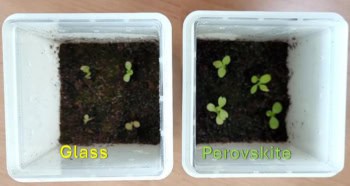
Restoring and expanding Europe’s forests will be a vital part of the EU’s efforts to limit atmospheric CO2, but reforestation targets are probably unattainable without profound changes to the region’s food system. Heera Lee, at Karlsruhe Institute of Technology in Germany, and colleagues in the UK and Romania, modelled hundreds of scenarios in which they varied parameters such as food demand, land use and crop yields. The researchers found that, even with significant increases in the productivity of farmland, the majority of simulations forecast success only when meat consumption was cut drastically.
As human-caused CO2 emissions continue to rise, the large-scale removal of carbon from the atmosphere becomes ever more necessary to keep global temperatures to within 1.5°C of the pre-industrial average. This is sure to take the deployment of many complementary techniques, but the simplest of them is to plant more trees – billions upon billions of them.
The problem – particularly in a densely populated region like Europe – is that trees take up space, and much of that space is already used to grow crops for human consumption, animal feedstocks and bioenergy. To investigate how these competing demands might be met in the 28 countries of the EU, Lee and colleagues simulated Europe’s land use with an integrated assessment model.
The assessment platform that the researchers used models how land use responds to a range of interacting variables, including biophysical conditions like soil type and rainfall, and economic factors such as food demand and prices. Since the aim was to test outcomes that could meet the warming target set down by the Paris Agreement, the researchers ran the simulation assuming a temperature increase of 1.5°C. One factor that they kept constant throughout was the net proportion of food imported from outside the EU, so that they avoided scenarios in which European nations met their forestation targets by outsourcing food production.
After running more than 300 unique scenarios for each of three climate models, Lee and colleagues found that current dietary choices – meaning present-day levels of beef consumption in particular – were compatible with adequate levels of forest expansion only as long as agricultural yields increased significantly. But even then, with yield improvements of 75%, these model outcomes implied an overall decrease in daily calorie intake relative to today’s European average. Without any meat at all in the European diet, the most ambitious target for increased forest coverage could be achieved with yield improvements of 15% and no decrease in daily calorie consumption.
There are good reasons to believe that technological changes, such as crop breeding or better land management, will deliver significant increases in agricultural efficiency over the next few decades, but probably not to the degree required to sustain current diets.
“Historically, the effects of technology on crop yields have been enormous, delivering 3–4-fold increases over the last 40–50 years for most crops,” says Lee, “but we don’t think we can achieve an overall yield improvement of 75% everywhere in Europe. It is a hypothetical maximum value that differs a lot depending on the crop types and the region.”
Yield increases might also come about as a result of the very process that the afforestation effort is designed to prevent. In Europe, climate change is expected to improve growing conditions in northern latitudes while harming them in the south. “The effects on crop yields across Europe as a whole are broadly positive,” says Lee, “but I want to highlight that there could be winners and losers.”
Assuming that cutting down on meat does turn out to be necessary, persuading consumers to change their habits will not be easy. Lee suggests that raising awareness of the environmental consequences of food choices would be the most straightforward way, since this factor already seems to be at least partly behind the increased prevalence of vegetarian and vegan diets. Increasing the cost of meat directly (through taxes) or indirectly (through land-use regulations) could work, but would surely be unpopular. “The alternative to a stick,” says Lee, “is a carrot: plant-based foods could be subsidized to make them relatively cheaper than meat.”
Lee and colleagues reported their findings in Environmental Research Letters.



